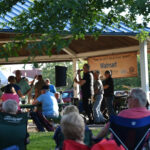Trailblazing women created many paths for today’s girls
It’s appropriate that March is Women’s History Month. The women of Versailles marched in 1780 to demand bread to feed their families and sparked the French Revolution in the process. American women marched for the right to vote in 1913, the first civil rights demonstration in the nation’s capital. The Women’s March in 2017, a continuation of the quest for equal treatment, was the largest single-day protest in American history. Women have marched countless miles for their rights, but unfortunately, while they’re closer to their destination, the march is not over yet.
The history of the marches and other efforts to achieve gender equality, and the pioneering women who have been at the forefront of them, are on display at the National Women’s History Museum (womenshistory.org). The museum has been an online presence for the last 20 years with efforts underway to create the first physical museum dedicated to women’s history in the nation’s capital. The virtual museum features, articles, biographies, educational resources, collections, public events and more.
The home page is topped with a slideshow of featured exhibits. It starts with an artistic celebration of Kamala Harris, the first woman in the United States to be elected vice president. It’s a portrait of her done in the unusual medium of shattered glass, a nod to her breaking the glass ceiling in the White House. There’s a fascinating video of artist Simon Berger literally smashing glass with a hammer in a controlled fashion to bring out the image of Harris.
The next featured exhibit is Brave Girls Virtual Storytime. It’s a live, online reading of the children’s book “Ambitious Girl.” The book was written by Harris’ niece, Meena Harris, and will be read by the book’s illustrator, Marissa Valdez. A question and answer session follows the reading. You have to register on the site to participate.
The third feature is National History Day: Communication in History. This is a collection of biographies of influential women and girls, both contemporary and historical, from a variety of fields, including civil rights, politics, entertainment and more.
A navigation bar across the top of the site details the museum’s offerings. The Women’s History link has a dropdown menu to subsections: Biography, Articles, Online Exhibits, Resources, Women’s History Month, and Chronicles of American Women: Your History Makers. The last section, Chronicles, allows you to upload stories of women who have enriched your life.
The Students and Educators section has resources for teachers to broaden their lessons with information on women’s history. The Study Collection and Library section contains resources, collections and archives that can be searched and examined. The Public Programs and Events section lets you witness and participate in events aimed at educating people about women’s contributions to history and paving the way for equality. There’s also an About Us section with the mission, history, leadership and other information about the museum, and a Support Us section that solicits contributions to the cause.
The site’s design, organization and navigation aren’t bad but could use a little refinement. It serves a good cause, educating and inspiring people about the past contributions and future potential of half the world’s population.

Kevin OʼNeill has been a staff artist for The Times-Tribune since June 1993. In addition to doing illustrations and infographics and designing pages for the paper’s print and electronic publications, he writes InSites, a weekly column about websites and apps. Contact: koneill@timesshamrock.com; 570-348-9100 x5212




